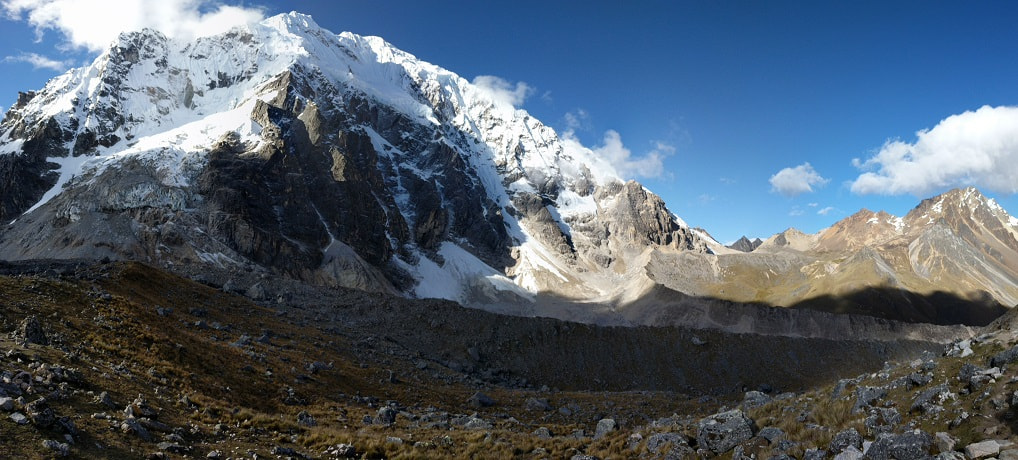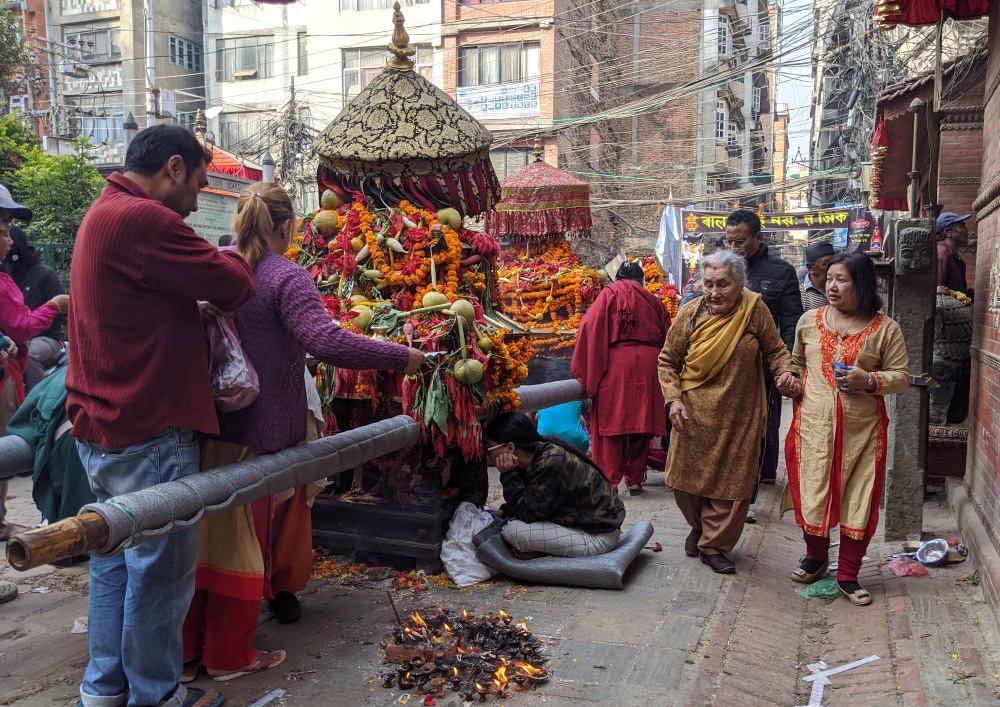
In our couple days in Kathmandu we found it to be a place with vibrant culture and countless beautiful temples, but brittle infrastructure and hazy air. It is a hard place to describe since it is so multi-faceted. Each neighborhood had a personality and specialty of its own. The city was hit hard by the 2015 earthquake and parts of the city are still struggling to rebuild, while others have luxury accommodations.
I expected more of a divide between the Annapurna region and the capital, but both had many dirt roads, good cell phone networks, open cook fires, internet, and people moving things in woven baskets supported by a strap on their foreheads. It was definitely distinctly different, and yet you were still surrounded by mountains hiding in the clouds.
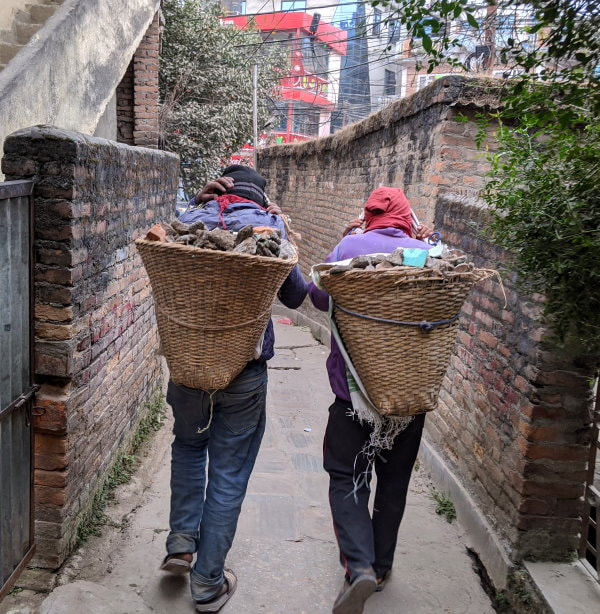
One huge divide between the city and the mountains was the air. In Kathmandu those clouds were made up of dust, smoke, and fumes. After a day there, we both developed scratchy throats and had a bit of a cough by the time we left. I’m not sure how well they work, but in retrospect face masks might have been a good idea.
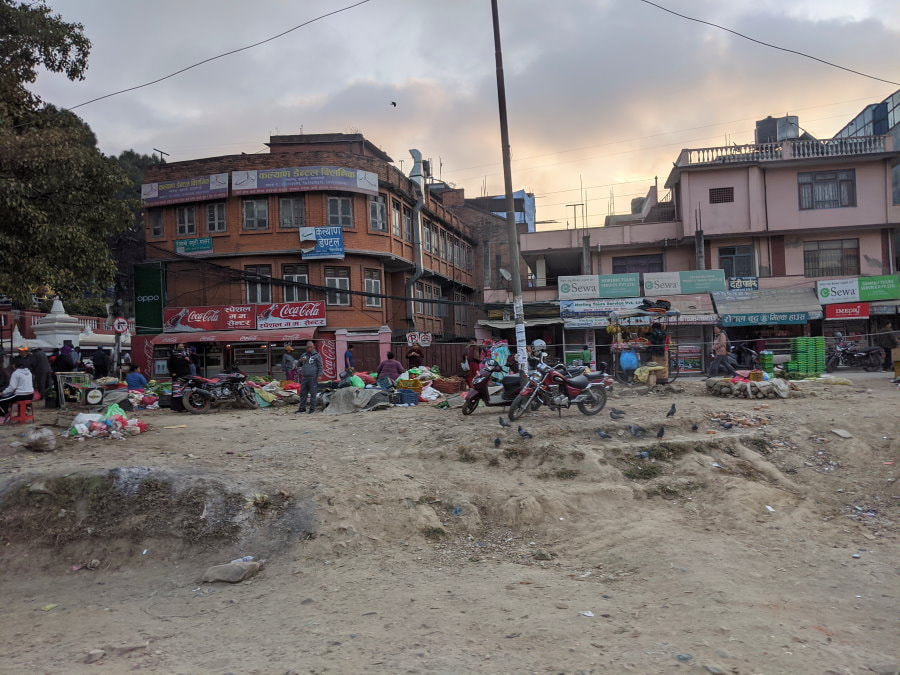
Contents
Thamel
Thamel is the tourist area of Kathmandu. Some families still live here, but most of the area is built around catering to tourist. This is an area of colorful storefronts, twinkling lights, thudding music, and lots of people looking for your business.
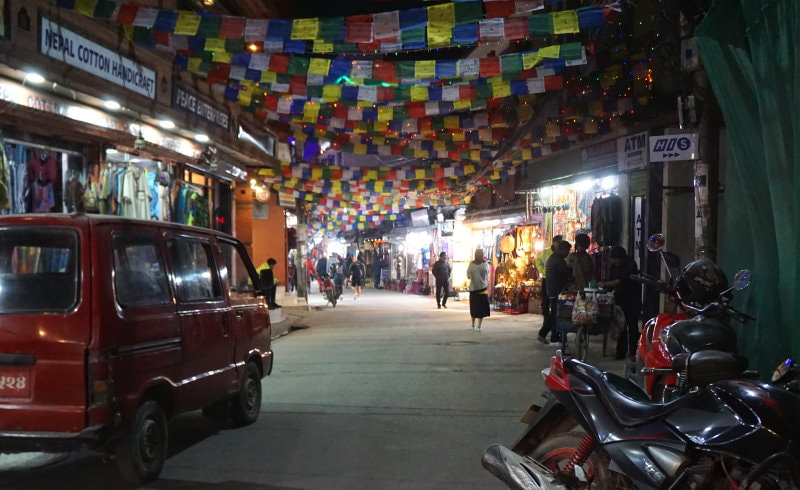
The dazzling displays and endless shops are fun to walk through and some of the sales people can sure put on a show. Just walk into a singing bowl shop and you will see what I mean. Whether you want trinkets or art, they have just about everything, but so will the next shop, and the next, so shop around. We had fun looking at the number of different shawl materials they offered. A few include cashmere, wool, yak (novel, but not very soft), and baby yak.
We kept close tabs on our phones and valuables everywhere in Kathmandu, but felt more on guard in Thamel than in other parts of the city. We never felt physically threatened, but we noticed people would visibly look down at your pocket or look you over as you passed through the streets. We also encountered quite a few people who would walk up beside you uncomfortably close and ask if you wanted to buy drugs.
Logistics and Practicality: The tourist buses to Pokhara and many other tours leave from here. Thamel is a convenient place to stay if you are looking to mingle with other travelers and have lots of transportation options. You also will have no problem finding English menus and just about any cuisine, but prices will be more expensive. If you choose to stay farther from the city center you will have slightly better air quality, but you will need to rely more on taxis to get around.
After our trek we stayed just outside Thamel on the North side. During our two day stay we only used a taxi to get to and from the airport. Otherwise, we walked everywhere, including the Monkey Temple.
Shopping: Wether you are looking for souvenirs or trekking gear Thamel has plenty of both and haggling over the price is expected in most stores. Be careful when buying trekking gear. Most items are cheap imitations labeled with name brands, what people often refer to as “North Fakes.” There are a few shops with good quality, but most of the imitations are not likely to last very long. For more on trekking gear check out the Buy, Rent, or Bring? section of my trekking article.
If you are looking for something in particular don’t be afraid to ask. Most of the shop keepers were friendly and would direct us to one of their friends who did have what we were looking for. When we were looking for shower sandals one guy actually told us about a local market that would have better prices.
Experience Real Kathmandu
Want to spin a prayer wheel, receive a Hindu blessing, or watch a pack of monkeys? These are just a few of many experiences you can have in Kathmandu.
Just like any city that receives a lot of tourists, Kathmandu is kind of like two cities in one. Thamel (tourist district) and Durbar Square (historical site) may seem exotic, but they aren’t the places where most people live their lives. You only have to walk a few blocks away from them to be in a completely different world.
Guided Tour or Independent Exploring?
In Kathmandu I would recommend a bit of each. There are many things you can see and do on your own, but an explanation can add a lot to the experience.
Guided Experience:
We did a free tip based walking tour with Shiva Dhakal* and really enjoyed it. He guided us through different areas, shared lots of stories, and was able to answer all of our questions about the things we were seeing. He clued us in on the customs, etiquette, and told us where we could or could not take pictures. Shiva also gave us a reason to be in some places that we may have felt unwelcome on our own, while acting as a shield from the “holy men” selling blessings and other similar entrepreneurs.
One really neat experience Shiva shared with us was taking us through a small doorway that opened into a courtyard in the middle of Thamel. Even in some of the most touristy areas of the city, real people are living, just hidden from view. The courtyard had a beautiful shrine and the apartment buildings were adorned with intricate carvings.
*I am not affiliated or receiving any compensation from this tour company, but I though this was a valuable experience.
Independent Experience:
Independent exploring can be a crazy adventure that takes a bit of courage for some. Before you head out, mark your lodging on a map, then put it away and get lost! When you are exploring on your own with no destination in mind you never know what you will find.
Sometimes we just go with the flow and see where the locals lead. There was one busy street that we were on and everyone seemed to be moving in one direction so we went with the flow. The street narrowed and eventually went inside a building that seemed like a wholesale clothing market with bales of t-shirts and textiles. The passage that emerged on the other side was a narrow hallway that was barely lit, ending abruptly back on the main street. I have to admit I felt very out of place and it made me a little uneasy but it is not at all what I would have expected to find. Another place we wandered into was a small market selling temple offerings and had beautiful trays of flowers.
Many of the areas we walked through were busy and exciting, but also loud and crowded. With people close on all sides and the constant sound of horns it is easy to feel overwhelmed.
Three Kathmandu Experiences
I think checking out at least a couple temples and markets is a must in Kathmandu and with that comes the vibrant culture of the people. Temples and markets are both so numerous that you can walk just about any direction and bump into one.
Temples: There are several famous areas like Kumari Ghar (home of a “living child goddess”), Dunbar Square, and Swayambhu Mahachaitya (Monkey Temple), but temples and shrines are everywhere and many are open to the public. Most are Buddhist, Hindu, or some combination of the two.
The variety of holy sites we saw was incredible. One had a prayer wheel twice my height, one had a amorphous blob of coins with a nail though each, some felt a bit like museums with everything behind glass, and some were street side shrines. The feel of the places were just as varied. In one temple complex a group was playing badminton, while others were solemn.
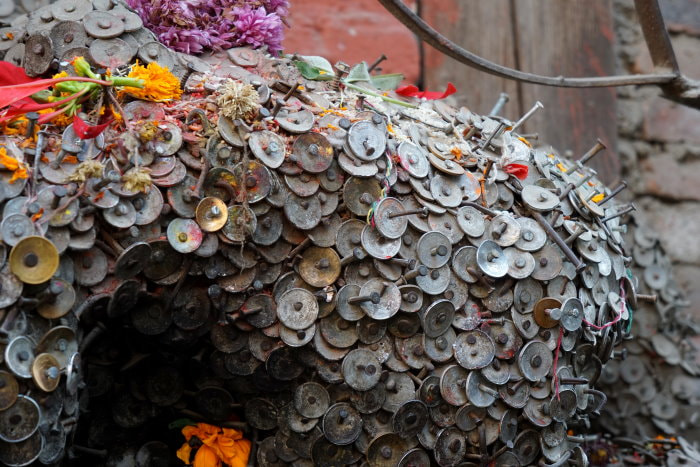
Personal Favorite - Seto Machhendranath Temple was one of my favorites because of the intricate metal and stone work. Walking inside, the lattice work surrounding the temple made it feel open and airy while setting it apart as an enclosed holy space.
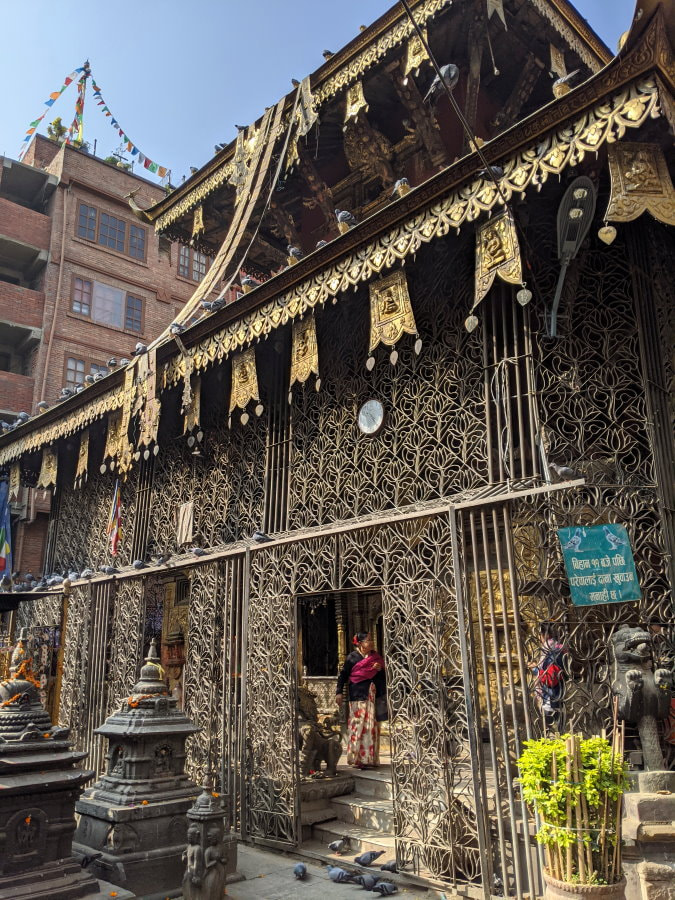
Tika - At many of the holy sites there were holy men offering a blessing in exchange for a negotiable donation. If you choose to receive a blessing they will generally say a few words and mark your forehead with tika, a red dot. These people vary from devout holy men to entrepreneurs dressing up to sell blessings and pose for photos. It can be a fun experience, but some can be a little pushy.
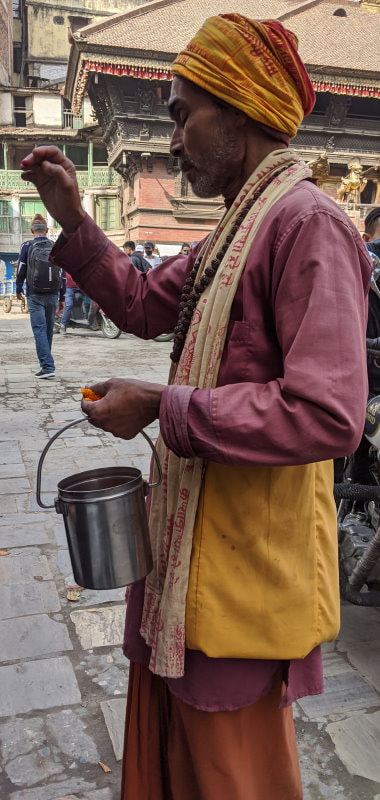
Offerings - We saw lot of candles and flowers being left as offerings, but also sometimes produce, particularly daikon radishes. It is also common to see people offering food to the animals, particularly pigeons, in exchange for good karma. Our guide pointed out another kind of offering that I was not familiar with. At some shrines people pour milk onto an icon for fertility.
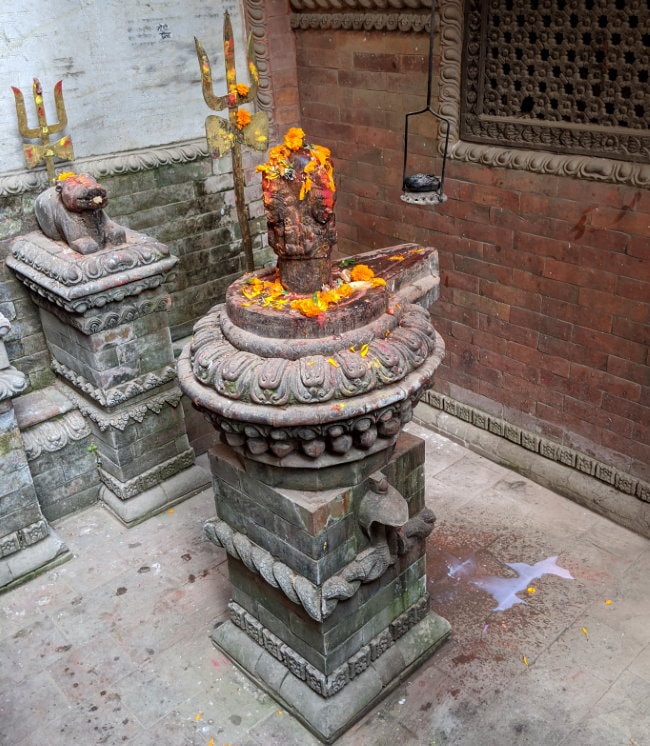
Prayer Wheels - Buddhist prayer wheels are generally inscribed with a mantra and are usually supposed to be spun in a clockwise manner with one’s right hand. When we went into the giant prayer wheel our guide instructed us to go around three times.
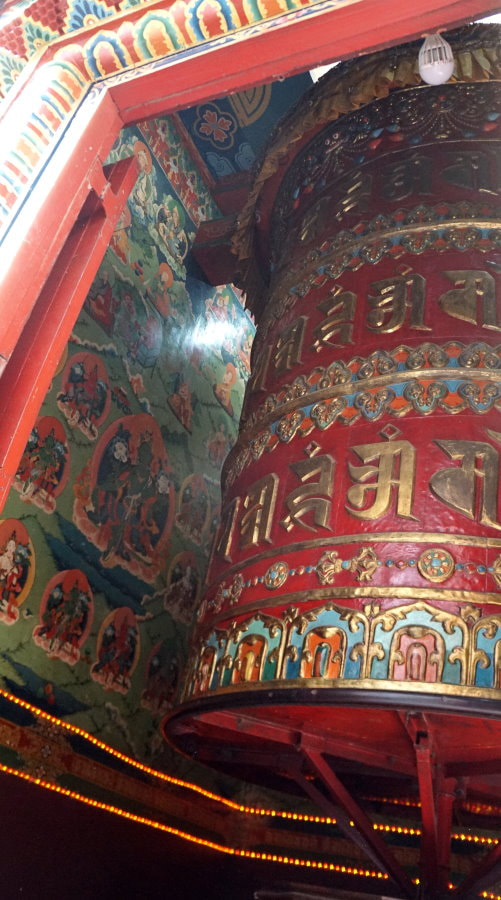
Festivals - We were lucky enough to stumble across a festival procession outside one of the temples that we were told only takes place once a year. There were a couple platforms mounted on poles to be carried around and it seemed like a community event in which everyone was bringing offerings and contributing a little something. The platforms were overflowing with produce and flowers. We didn’t understand a lot of what was going on, but it was incredibly colorful and fun to see.

Death and Cremation - Death is much more intimate in Nepal than in many Western countries. Instead of a funeral home whisking the body away and beautifying it, the family is generally much more involved. It is traditional for the family to clean the body and prepare it for cremation on an open fire. Our guide showed us one of many cremation sites and explained that there were five exceptions where a person would be buried instead of cremated, but regardless of the final rites their spirit would make the same journey. These exceptions that would require burial included priests, pregnant women, infants, snake bike victims, and people with leprosy.
Temple Etiquette:
- Dress conservatively, at a minimum cover shoulders and knees
- Travel around them in a clockwise direction, and turn prayer wheels clockwise
- Only use your right hand when touching things like prayer wheels (left is considered dirty)
- Remove your shoes inside
- Do not disturb offering (flowers, food, candles) and if they are on the ground try to go around and not over them
- Do not take photos during prayer services
More on the Swayambhu Mahachaitya (Monkey Temple) below.
Markets:
The markets in Kathmandu felt a bit like specialty stores made up of vendors instead of shelves. Most of them specialized in one particular thing and had rows of stalls selling variations of that.
We saw one where every vendor was selling strings of tiny glass beads for special occasions.

Another area had stacks of fabric in a rainbow of patterns.
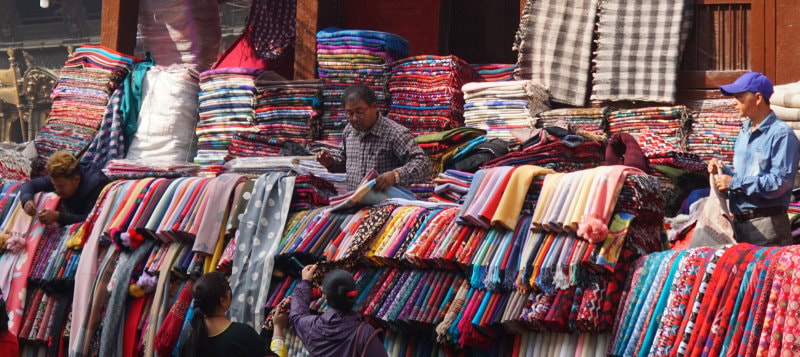
One had pottery vendors with bowls and vessels of every size.
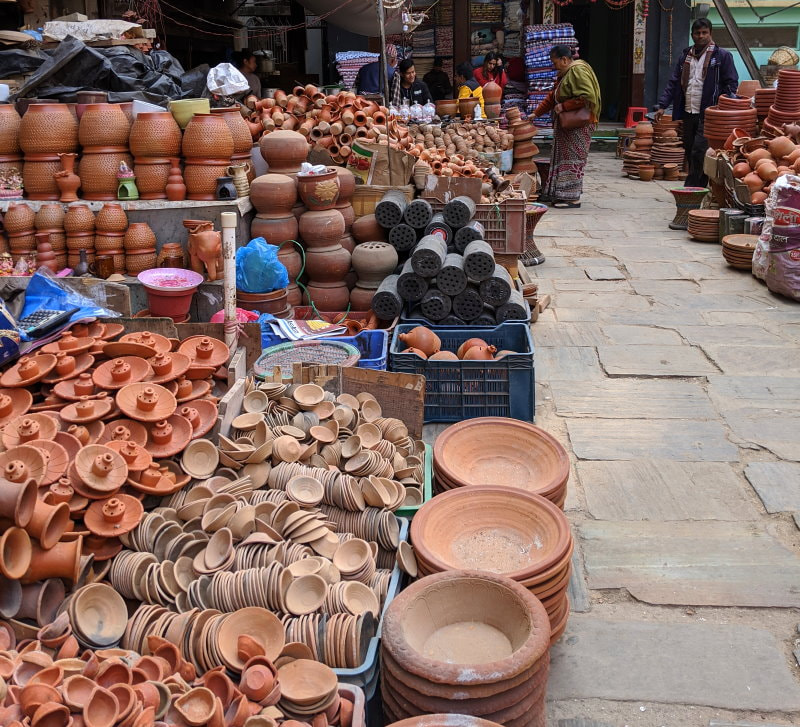
At one all the vendors had metal products ranging from copper pots and dishes, to candle holders and religious idols. Dishes are often metal and metal items are often given as wedding gifts because they can retain their value for generations.
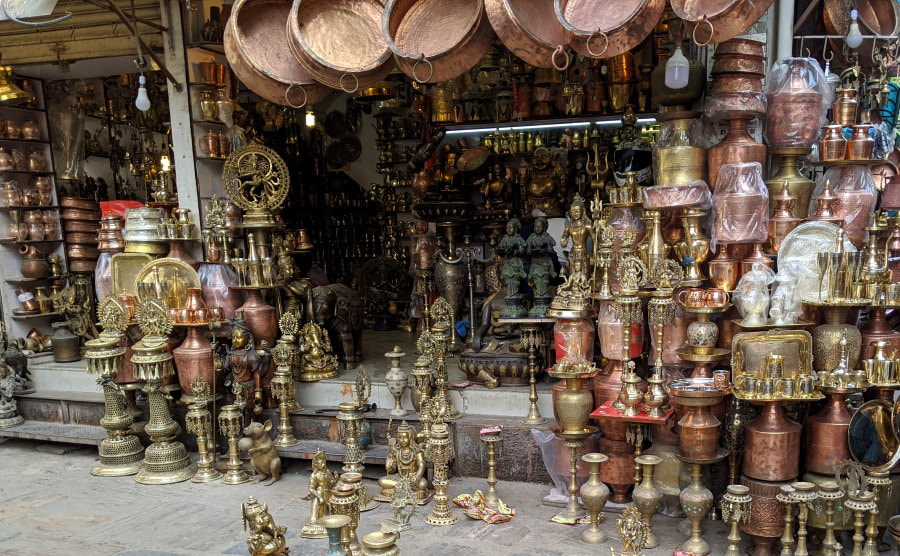
At one of the produce markets there was a line of men with these tall sticks that looked like some kind of instrument. Our guide explained that they were tools for processing cotton and people would come here to hire them.
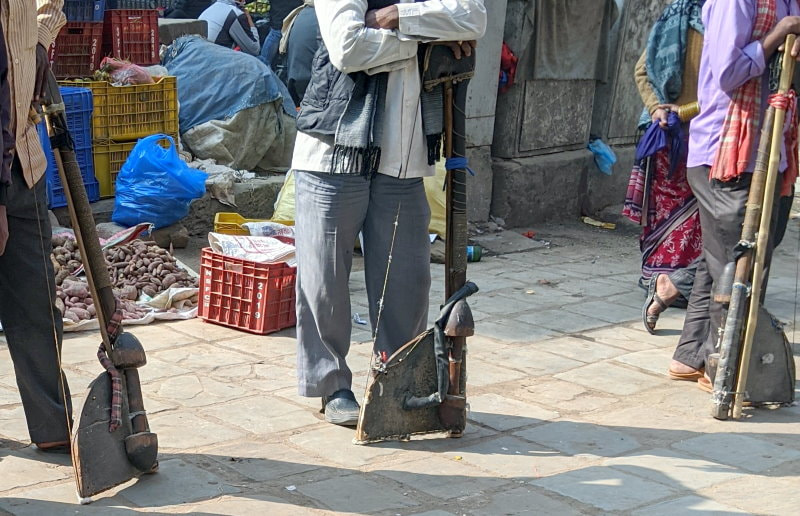
This reminded me of Conor, in the memoir Little Princes by Conor Grennan, explaining the process of trying to buy blankets in Kathmandu, and discovering he had to work with someone different for each step of the process. One person to beat the cotton, one to sew the casing, and so on.
People/Culture:
The citizens of Kathmandu struck me as resilient people with a rich culture who face adversity every day.
Resources - If you look through the photos you will probably notice a plethora of haphazard electrical wires. While it may not be technically legal, it seems that if you have the know how and the resources you can generally acquire electricity.
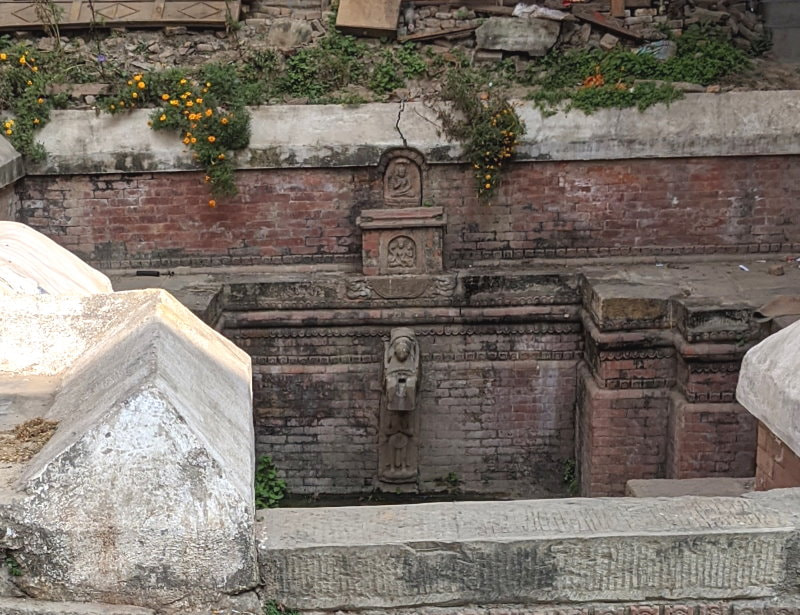
Safety Net - Nepal lacks welfare, unemployment, social security, and many other safety nets. This strengthens the necessity of tight knit families, but also leaves some people with very few options. Our guide showed us a small homeless community on the banks of Bishnumati River. He explained that there are no job training programs and that this is a very hard situation to climb out of. While the barrage of beggars is annoying and this doesn’t mean handouts are the way to go, it did make me feel more compassion for them.
One common job that some people use to feed their families is scavenging. These people work as trash collectors and recyclers on the streets and in the dumps. Our guide said most only make about 1 USD per day. That goes much farther in Nepal than it does in much of the world, but not far enough.
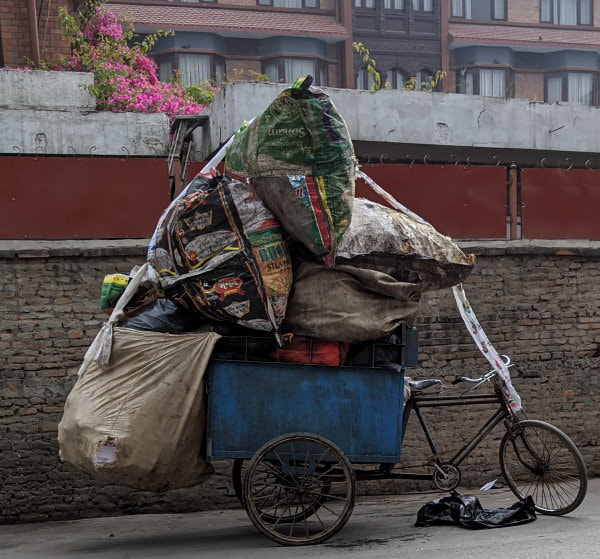
Earthquake - After the 2015 earthquake some money was available to help with rebuilding, but it was generally only a small fraction of what was actually required. Many people were displaced, unable to come up with the money needed. The building below is one of many that were damaged beyond repair.
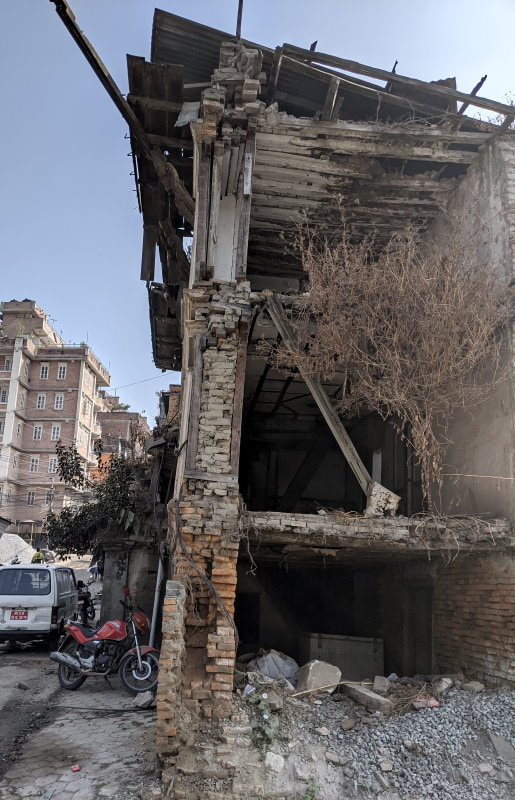
This crumbling building is located directly across the street from this shantytown in the middle of a working class neighborhood. It is likely that some of the people in the metal huts were living in this building or a similar one nearby before the earthquake.
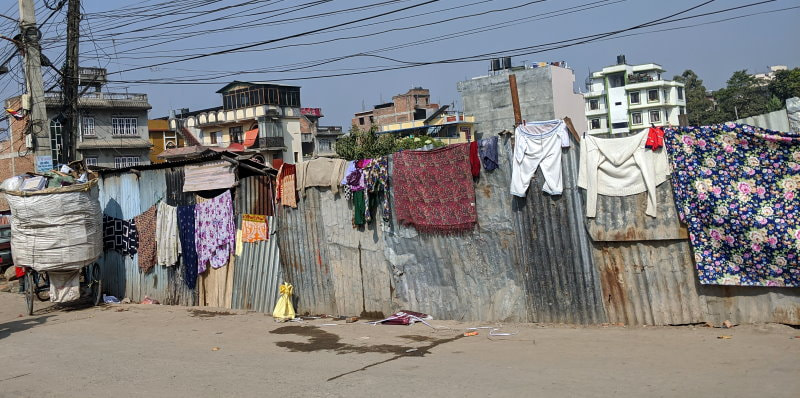
Roads - The feel of the traffic in Kathmandu was a bit different than most other major cities I have visited. The streets buzz with life and the cry of horns. Horns blare everywhere, but it is more just the sound of “watch out” or “I’m over here.”
The streets were a flood of people, motorbikes, and cars. Often the vehicles are packed in so close that people can’t even walk between them. Most motorbikes have cages around the rider’s legs for protection. This is not a place I would recommend driving.
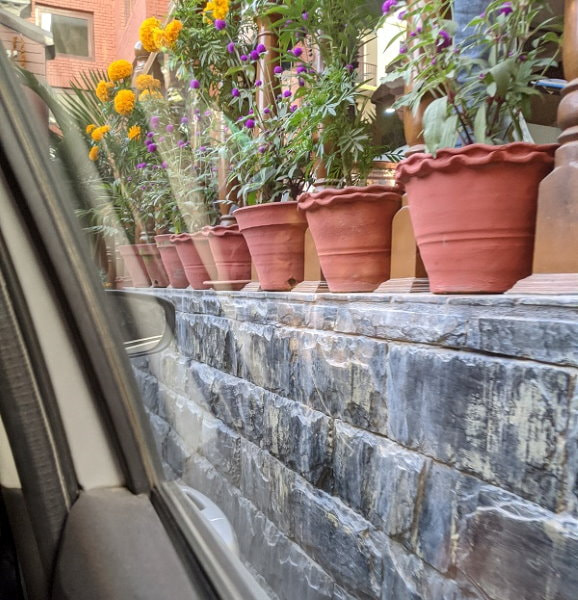
Vehicles and walls would be mere inches away and while many of the skilled maneuvers made me cringe, everything felt like slow motion. In the city I’m not sure we ever topped 20 mph (32 kpm) and even the highway to Pokhara was painfully (but thankfully in some sections) slow.
More Culture - To understand some of the culture a little better I highly recommend While the Gods Were Sleeping by Elizabeth Enslin. This is the true story of an American anthropologist who went to Nepal to meet her fiance’s family and ended staying long enough to raise a toddler there. Motherhood and her family connection were complicated, but also opened up a world that many outsiders don’t get to see.
Swayambhu Mahachaitya (Monkey Temple)
There is plenty to love about the Monkey Temple. It is a beautiful site, has a great view of the city on a clear day, and is a UNESCO World Heritage site with one of the world’s lowest entry fees (less than 2 USD, Rs.200 in 2019). Of course you are almost guaranteed to see lots of monkeys, which can be a plus and a minus. It takes quite a few stairs to get up there and once you arrive there will most likely be lots of tourists and lots of vendors selling trinkets.
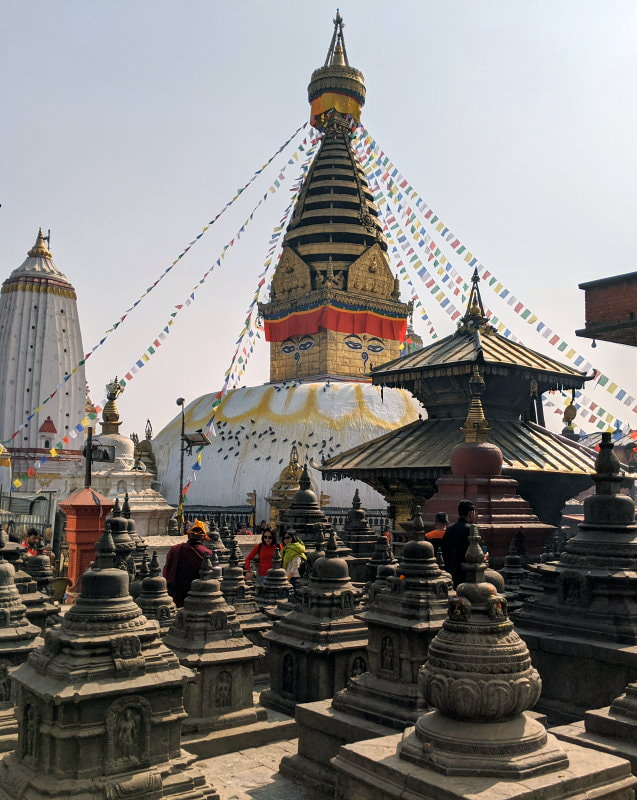
This stupa, like many, has the face in the center. This face is on all four sides of the structure, looking out in all directions, symbolic of the all seeing presence of Buddha. The nose, that may look like a ?, is actually the Nepali number 1 and stands for unity.
While this stupa is the central one in this complex, it is one of many. When you get to the far side, opposite the entrance, the exits there just look like alternate exits, and many people go back out the way they came. These “back exits” actually lead to the rest of the complex which stretches across a large park on the backside of the hill and is dotted with more sites ranging from small shrines to grand stupas.
We went out this way and spent more time wandering the grounds than we did in the main area. This area was mostly locals and swarms of monkeys. We encountered a friendly group of children on a school outing, saw young boys running around one stupa spinning all the prayer wheels, and lots of people in peaceful prayer. There were some teenagers way way up in the trees taking down old prayer flags and monkeys tumbling in piles of flags on the ground.
The troops of monkeys were fun to watch but a bit intimidating. Occasionally, a male would challenge another or there would be a scuffle over food, accompanied by a sudden screeching or howling and monkeys running. We didn’t see any aggression towards people, but there were plenty of babies around so I could easily see someone inadvertently coming between one and its mother. Monkeys are fun, but I have seen people bitten and scratched, so it is usually safest in places like this is to keep your distance and don’t carry any food.
Here, it is a local custom to feed the monkeys for good karma. In this section of the temple complex the trinket vendors were replaced by food and flower vendors. There were many people with buckets of bananas and other foods surrounded by monkeys.
Newari Food
Unlike many of the people groups in Nepal which are vegetarian, the Newari people generally eat meat, including just about every part of the water buffalo. Rice is a staple, but instead of fluffy and boiled it is traditionally eaten “beaten” which is dry flattened grains that look a bit like rolled oats. According to our city guide, these people traditionally made up much of the middle class of the Kathmandu valley and worked a variety of jobs including as merchants, craftsmen, and farmers.
Newari food was on my list of interesting things to try so we got a recommendation for a local place from our AirBnB host. He warned us that the place was nice and clean, but may not have an English menu.
We arrived at Harati Newari Restaurant with a list and pictures of some of the dishes we wanted to try, a bit nervous about how this would go. We noticed that just as our host said, we did appear to be the only non-locals here.
The place was beautiful. All of the seating was open to the outside and had ornately carved wooden pillars and accents, typical of Newari craftsmanship. However, as is typical in Kathmandu, there always seems to be branding somewhere, and here it was on the tables. The top of each table was bright green and had a popular beer brand printed across the surface. In the back of the restaurant was the kitchen, which was separated by a half wall so we could see people busily moving around, but couldn’t quite tell what they were doing.
A man in casual clothes met us, greeted us in perfect English, and gave us a couple recommendations as well as his opinions on the dishes we were considering. We ordered a thali set, buff chili, bean soup, and on his recommendation the egg curry. You can find a bit more on these and many other foods in my Nepali Food Post.
The man who had greeted us delivered the dishes and explained a little about each one, then stayed and chatted for a couple minutes. He said he was a Marathon runner and had competed all over the world, including in the Boston Marathon and New York City. As he walked away we realized that the pictures on the wall were of him running marathons and the outfit he had on wasn’t casual street clothes, it was sports wear. He was the owner.
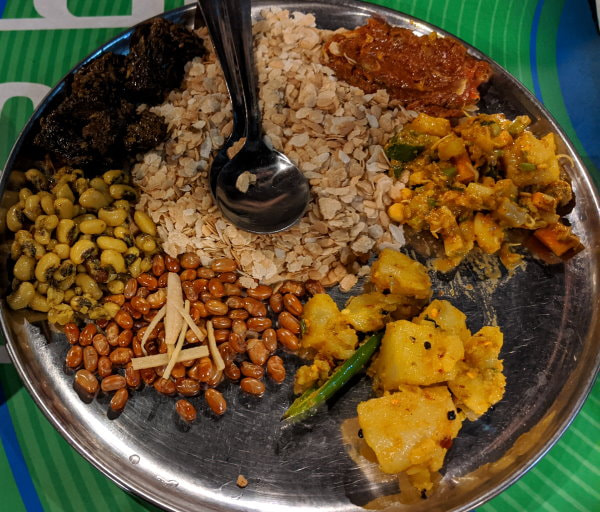
The menu was all in Nepali so we had no idea what our bill would be like, but not to worry as it came to less than Rs.700. This is the only place we tried so I can not compare it to others, but it is conveniently located just past the North end of Thamel. I would recommend* this place, but with the caveat that while the food should be good, the owner may be off on one of his many trips. We just got lucky running into him.
*I am not getting any compensation for this recommendation and the owner did not know that we were bloggers, so no special treatment was given on that basis.
Product Links: I am not sponsored by any of the products I link to. If you choose to make a purchase from one of the links of a product I listed or any other item a small percentage will go back to me to fund this website, at no additional cost to you. The products I link to are either ones I have used or similar if those are not available. Thank you for your support.
More?
One of the most popular things to do in Pokhara is go on a trek. We did the Annapurna Base Camp Trek and it was fantastic!
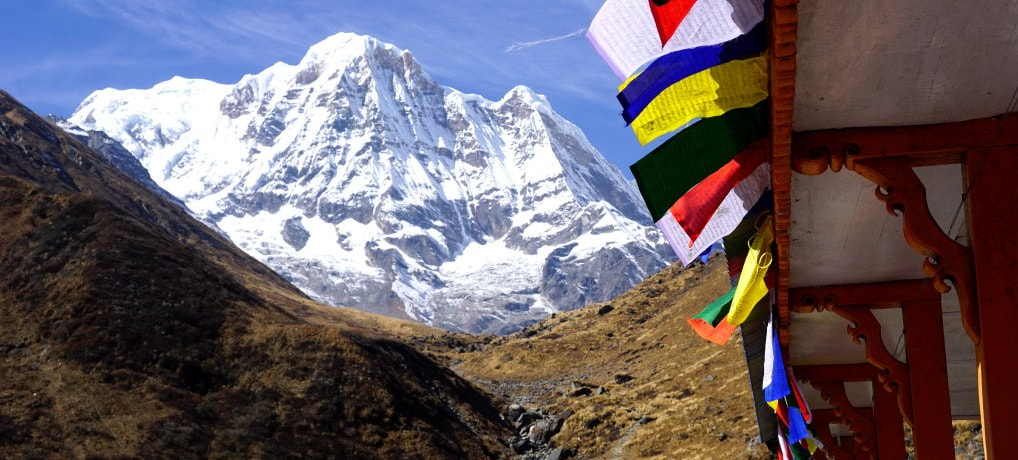
A shorter but still epic hike: Suicide Cliff in Hong Kong
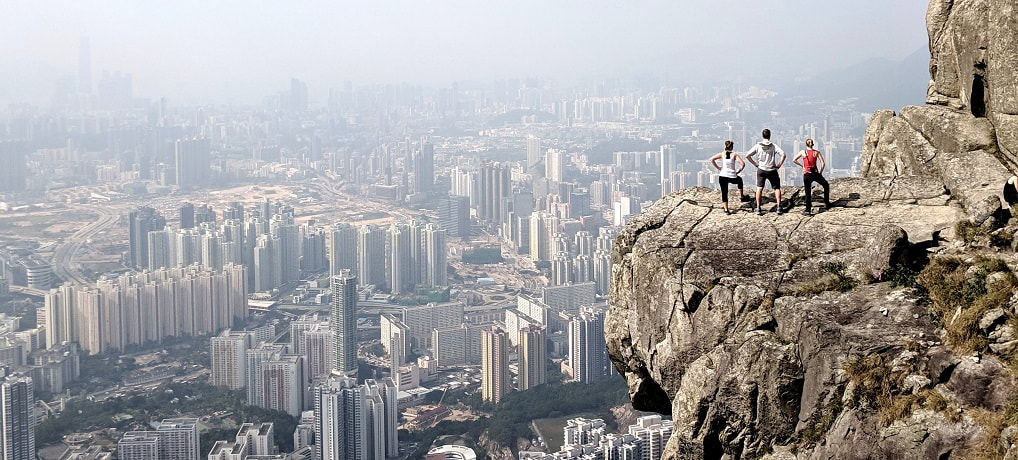
Iceland Ring Road Journey of Southern Iceland, Northern Iceland, Western Iceland, or Eastern Iceland.
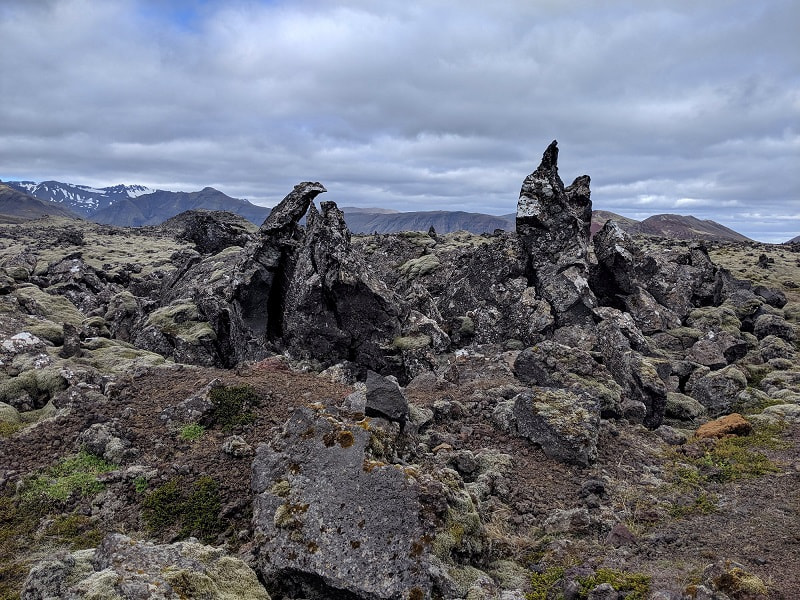
Everyone goes to Machu Picchu but getting there can be just as epic. We had an amazing experience on the Salkantay Trek
